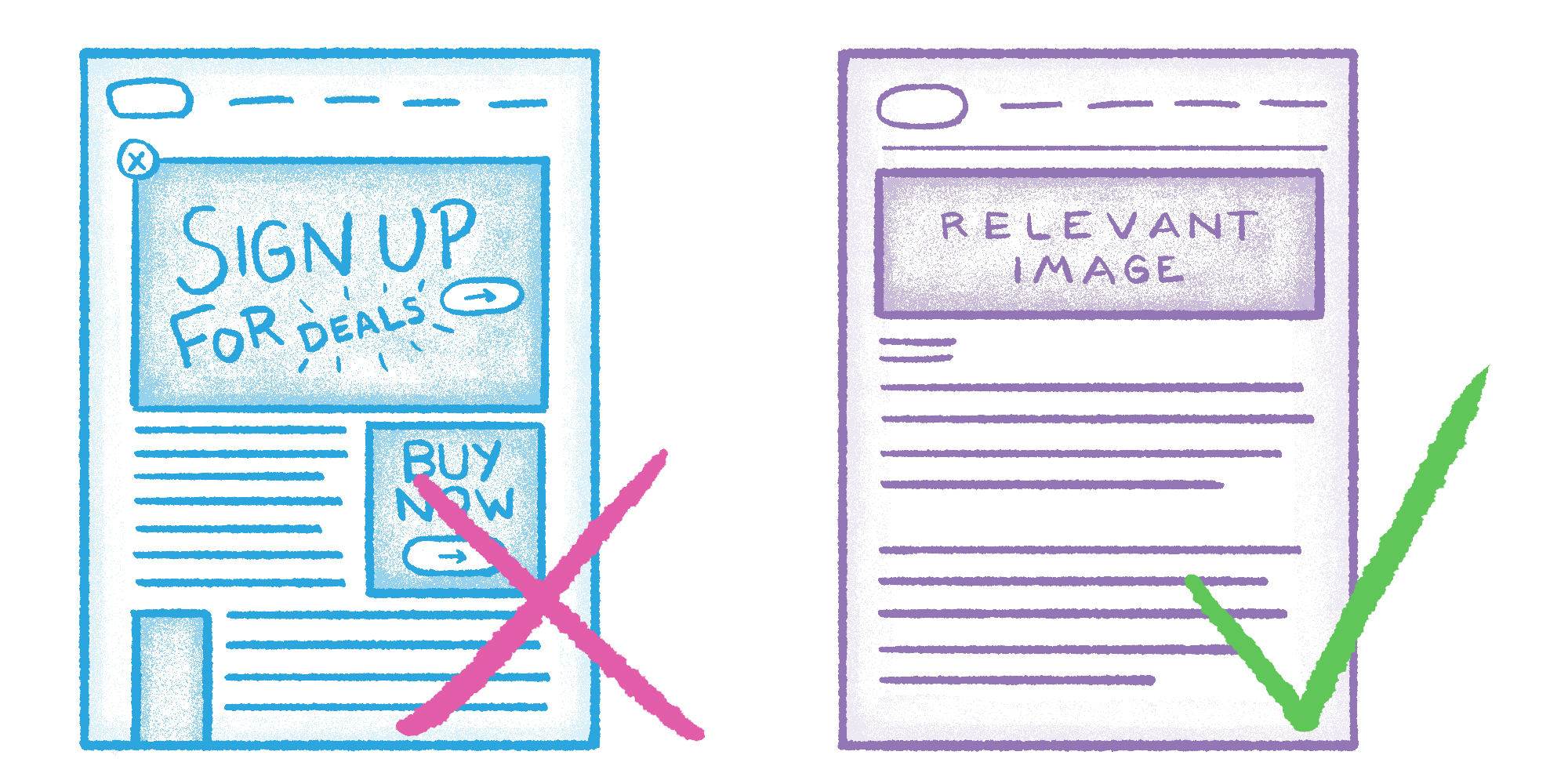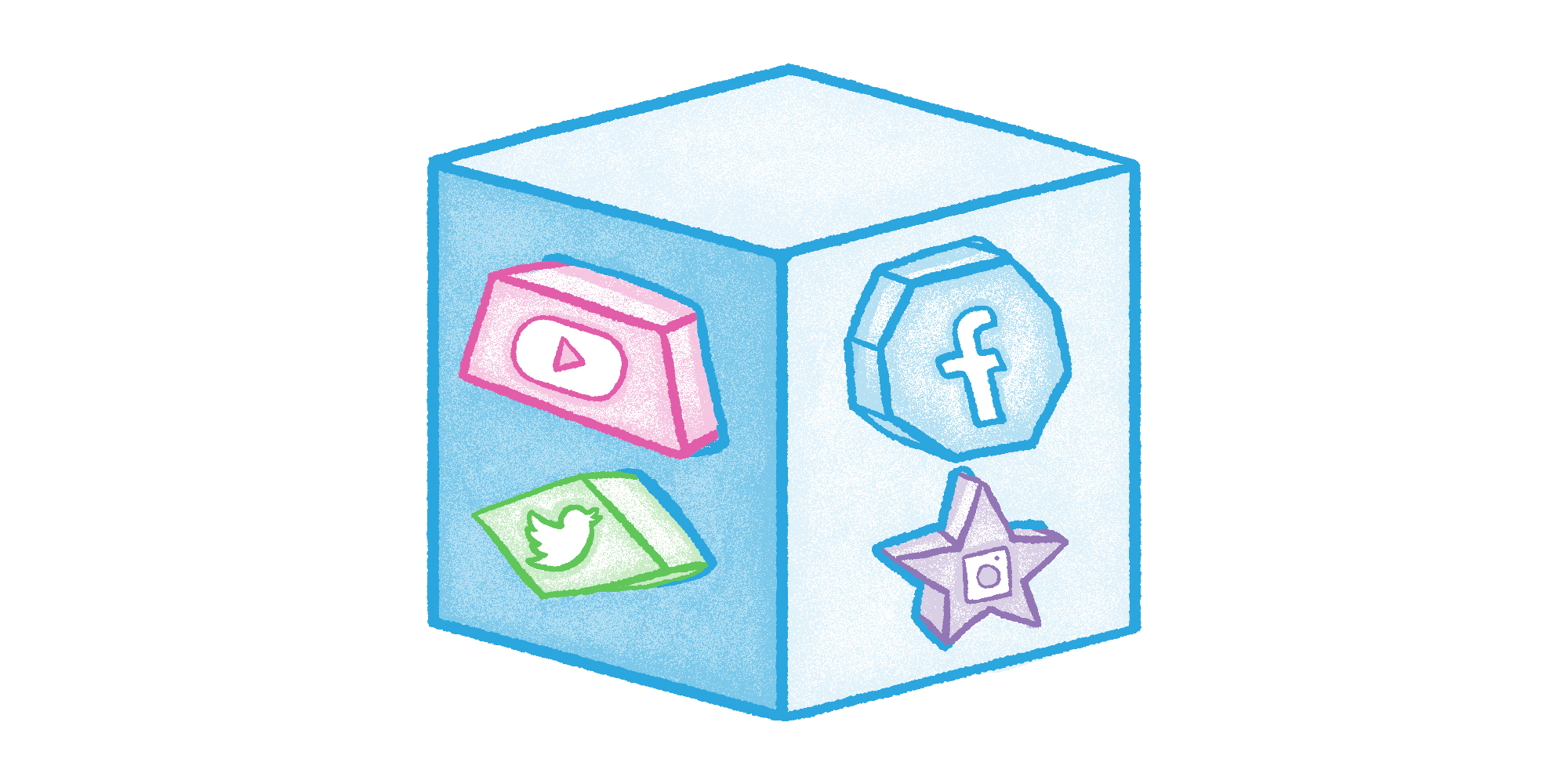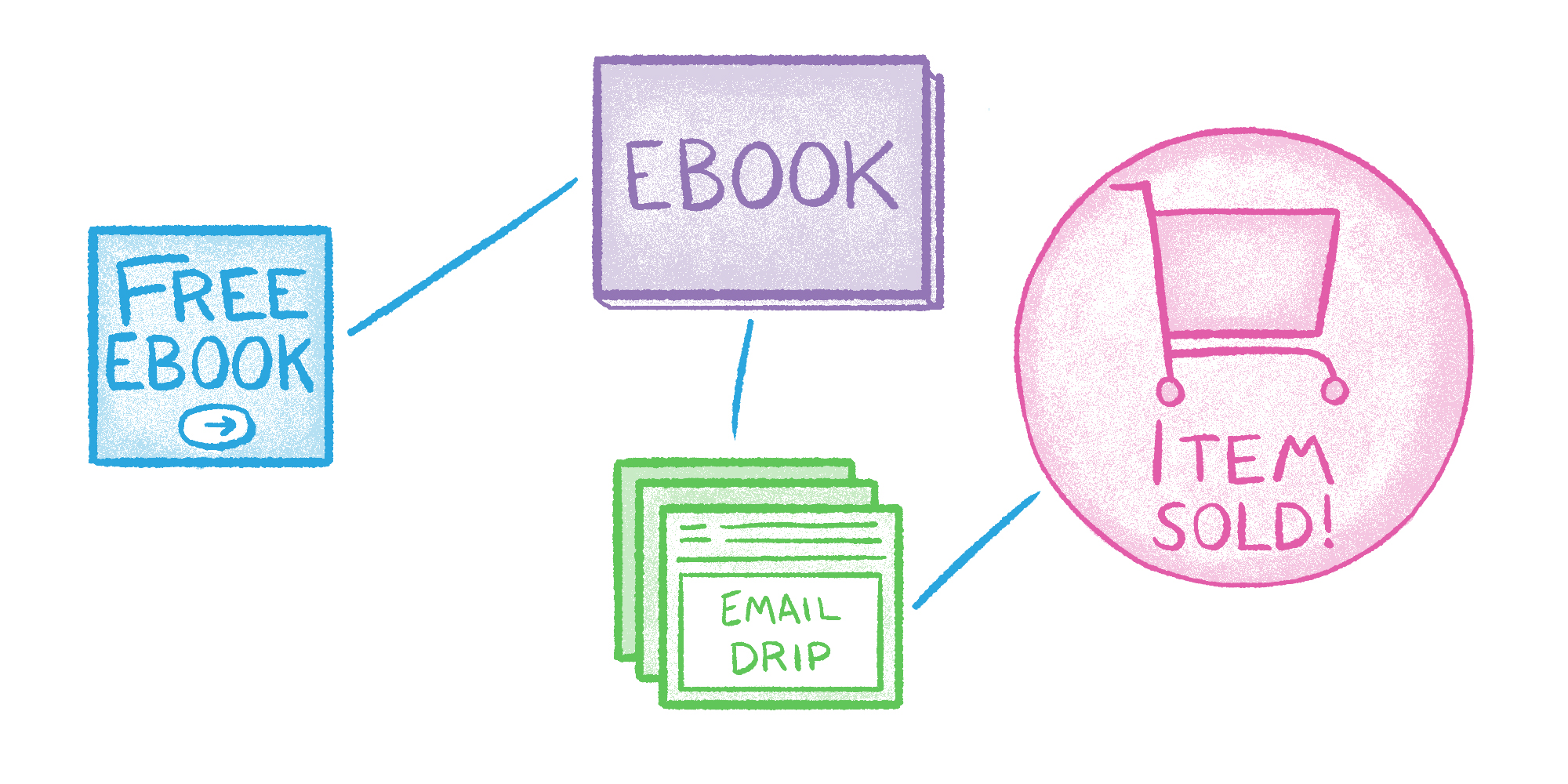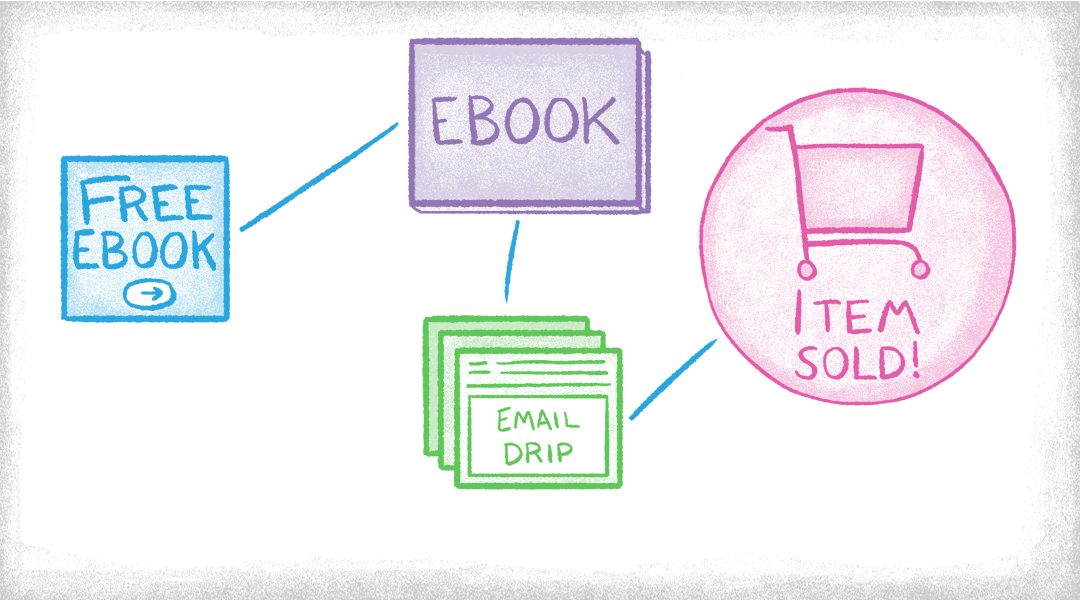“Content experience” is exactly what it sounds like: it’s how your audience experiences your content. It’s a facet of content marketing that focuses on things that hinder or enhance the way people receive and respond to your articles, videos, posts, infographics, and audio.
Uberflip, the organization that coined the term, defines content experience as “the environment in which your content lives, how it’s structured, and how it compels your prospects and customers to engage with your company.”
While most organizations understand that content is in some way valuable, the emphasis is often on the need to create and distribute that content. Those are certainly important pieces—you have to have content to use it, and people have to see what you create for it to have an impact—but to be successful, you also need to consider how, for example, your website could be interfering with someone’s ability to even read your article, let alone their desire to act on your call to action.
In this guide, we’re going to explore how content experience relates to content marketing and dig into the things you can do to enhance the way your audience experiences your content—so you can get more out of the work you’re already doing.
How is content experience different than content marketing?
In some ways, “content experience” is just a rebranding of content marketing. For as long as content marketing has been a buzzword, good marketers have always made efforts to personalize content, remove distractions, use channels appropriately, choose relevant calls to action, enhance the way people experience content, and measure the impact of their work.
That’s just good marketing.
It would be a gross oversimplification to say that content marketing is about creating and distributing willy-nilly. But “content experience” was born out of the proliferation of content marketing definitions and a desire to clarify an often overlooked component of content marketing.
It’s not good enough just to create content—even great content. It’s not good enough to distribute your content. And it’s not good enough to just evaluate your content. Because the reality is: great content can still underperform if the environment that content lives in interferes with how people experience it, and if you aren’t using your content to take your audience somewhere relevant. (At the same time, a lot of content marketing veterans would probably just say that isn’t great content.)
For those who have been having success with content marketing for years, “content experience” isn’t a revolutionary idea. But it is a helpful reminder to think about content marketing holistically.
Uberflip calls content experience one of the four pillars of content marketing. The others are creation, distribution, and insights (or evaluation). Essentially, content experience is all about presentation.
So here’s how to make sure your presentation helps your content succeed.
Make your content easy to consume

Have you ever been really interested in an article, but had a hard time reading it because the text was too small, or the page was trying to load so many ads that the text kept moving, and when you tried to scroll you kept accidentally tapping the ads and leaving the page?
Or maybe as you got further into the content, a pop-up appeared with an irrelevant offer.
Or the wall of text was simply too hard to read for more than a couple minutes.
Or it was designed to be read on a computer, so on mobile, you have to scroll sideways to read it and zoom out to see the images.
No matter how good a piece of content is, its format and environment can have a big impact on whether or not someone engages with it. If your content isn’t performing well, it’s not always a sign that there’s something wrong with the content itself. You might just need to get rid of some things that are making it harder for people to consume your content—or add some things to make it easier to consume.
Ditch the disruptive ads
If your content only exists to get ad impressions, it’s hard to imagine getting rid of those ads. And when your scroll-triggered pop-up converts some of your traffic into leads, it might feel wasteful to let that go.
But if you’re using content to build an audience, drive people into your marketing funnel, and generate sales, then those ads and pop-ups are interfering with your goals.
While a small percentage of visitors may convert, they’re all going to encounter those ads and pop-ups. The vast majority of your audience will be annoyed when an ad increases the time it takes to load your page and gets in the way of reading or watching your content. As a result, many people will abandon your content before they hear what you have to say—not because your content isn’t good, but because they’re not going to fight through ads to find out if it’s worth the effort.
Enhance the experience
If you put a bunch of work into writing great content, make sure people can easily read it. Your text size needs to be large enough that people don’t have to squint and strain to see what you have to say.
White papers are the worst culprits. Many organizations take up so much space with design that they have to shrink the text to keep everything together. But unless the image is doing the bulk of the work of communicating your point, it’s getting in the way.
You should also use paragraph breaks, H2s, H3s, bold, italics, and other stylized text liberally. It’s definitely possible to overdo it (if everything is bold, nothing stands out), but changing the way your text appears can make it much easier to skim or read in one sitting.
If your paragraphs consistently stretch for five or more lines (or look like they’re all the same length), your content quickly starts to look like a wall of text, which makes it hard for your audience to feel any sense of progress.
For especially long content, jump links are a handy way to help people see what they want faster. People looking for something specific can navigate directly to the relevant section.
You can also enhance your content with visuals. Any time you explain a key concept, that’s a good opportunity to add an image. Data naturally lends itself to graphs, which can help people understand it in new ways. Statistics, facts, or a series of statements can work well as an infographic. And almost any type of blog post could be supported by a video that summarizes the main ideas.
Clean up your blog

A well-organized blog can be a huge boon to your content experience.
Redundant content makes your blog or resource library feel repetitive, and it makes it difficult for your audience (and Google) to identify your most valuable post about [topic you have four similarly titled posts about].
Outdated content risks exposing your audience to bad advice, which either makes them look bad for listening to you, or makes you look bad because they were wise enough to know it was outdated. Old content is also more likely to have broken links, which look bad to both Google’s bots and any humans that stumble onto these pages.
A content audit is a great way to declutter your blog and reorganize it into something more useful to your audience. If you’ve been producing content for years, you’ll inevitably have posts that no longer receive any traffic. Leaving these on your blog makes Google see your website as a ghost town. (There’s all these pages, but nobody’s here. Better not send anyone to this place.)
Thankfully, there are plenty of solutions. You can eliminate these posts without losing any value by using 301 redirects, no index, and rel=”canonical” tags. Or, you could merge them into a pillar page. Pillar pages structure your website around the topics you want to be known for, and they help you keep your blog organized moving forward by giving you a clear content strategy.
Ultimately, cleaning up your blog ensures that your audience has a simple way to dig deeper into your content, and it prevents old content from leading them to dead ends.
(By the way, if you want to clean up your blog, we’re currently offering free consultations.)
Use channels appropriately

You don’t have to be on every social media platform. And you don’t have to produce every conceivable type of content. But you do want to be sure that you’re publishing your content in the formats that are most valuable to your audience, that you’re distributing it to them in the most relevant ways, and that you’re using each platform in the way it’s meant to be used.
Play to the strengths of each platform
Writing a blog post and sharing it on Facebook used to be the bread and butter of content marketing. In fact, copy-pasting snippets of blog posts used to be the go-to method for content marketing on virtually every platform. But today, brands that want to succeed need to play to the strengths of each place they share their content–because that’s how you create the best content experience, and ultimately, the best long-term results.
Facebook doesn’t like when people leave Facebook, and so links have steadily become less effective–unless brands pay to drive traffic to their sites. (This is why we’ve said that the future of content is ads.)
But there are still plenty of ways for brands to change the content experience to fit with Facebook’s algorithms and get your expertise and insights in front of the right people. You could reformat a blog post into a series of standalone posts that don’t link to your blog, but establish your thought leadership. Or you could convert them into text-based videos. Or turn an infographic into slides.
Every platform is designed to help people discover particular kinds of content, and that means if brands want to put their content in front of the most possible people, they need to share it in the optimal ways.
Instagram is great for collecting and elevating user-generated content.
Pinterest is a content curation platform, but it’s also a powerful search engine.
Twitter is a free-for-all, where influencers and everyday people regularly enter the same conversations.
Cookie-cutter social strategies won’t lead to growth. And it gives your audience an experience that’s just as bland as your strategy. Using a channel inappropriately does two things: it makes your content less effective, and it alienates your audience.
If you want to deliver a quality content experience, you need to think about the ideal way to distribute your content in each environment.
You also need to be very aware of who you’re talking to.
Personalize your content

Hopefully, you don’t talk to every member of your audience the same way. Even if you only have one product or service, you probably have several types of people who benefit from it, each with unique needs, aspirations, interests, and problems.
This is why organizations often use personas—fictional people who represent real segments of an audience—to create specialized content for each category of people within their target audience.
Similarly, segmenting your email lists ensures that you only send people emails that are relevant to them, instead of sending mass communications which only apply to a percentage of your list.
Combined with targeted advertising, you can create entire ecosystems of content that meet the needs of each audience, so that from your ads, to your landing pages, to your drip campaigns, to your sales pitch, they only ever experience content that’s relevant to them.
Personalizing your content doesn’t always have to mean creating specific content for each of your audience personas, either: sometimes all you have to do is change the way you introduce it.
Guide your audience through your content

Every piece of content needs a purpose—for you and your audience. What happens when they finish reading your post or watching your video?
Not every piece of content needs a call to action. (Especially on social media.) Sometimes your purpose is just to establish thought leadership, contribute to a conversation your audience is having, or showcase the relevance of your brand.
But good content naturally leads to other content. Sometimes this happens in the post itself, with interlinking (this is the secret sauce that makes pillar pages and content clusters so effective), but if you’re using content strategically, you should also craft relevant “content upgrade” materials that make relevant calls to action for any post about a given topic.
Maybe it’s a checklist that walks people through the problem you just helped them solve. Or an infographic with exclusive data you pulled from your software or a survey. Or it’s a webinar. Or a course. It can be as simple as access to a spreadsheet you reference in your content.
Your content strategy should include plans to create ecosystems of related content, so you can provide a relevant, connected content experience no matter what stage of the funnel people are in or where you’re trying to reach them.
For example, you might serve someone an ad for a relevant ebook on social media or Google, then drop them into a nurture campaign loaded with relevant blog posts and standalone email content, while continuing to retarget them with ads for other related blog posts and ebooks. On specific webpages, you might also use chatbots to ask them related questions or point them to more relevant content.
The point is to keep people in your content ecosystem and continually help them discover the value of your brand, so that when you’re ready to make a pitch, they’re more than ready to hear it.
Start providing a better content experience
“Content experience” is a term for something good content marketers have been doing all along: thinking about how a target audience encounters and responds to a piece of content.
It’s never too late to take a holistic approach to your content. But the longer you wait, the more effort you’ll waste creating quality content that can never reach its full potential.
Want more insight into how you can create a better content experience? Contact us.


